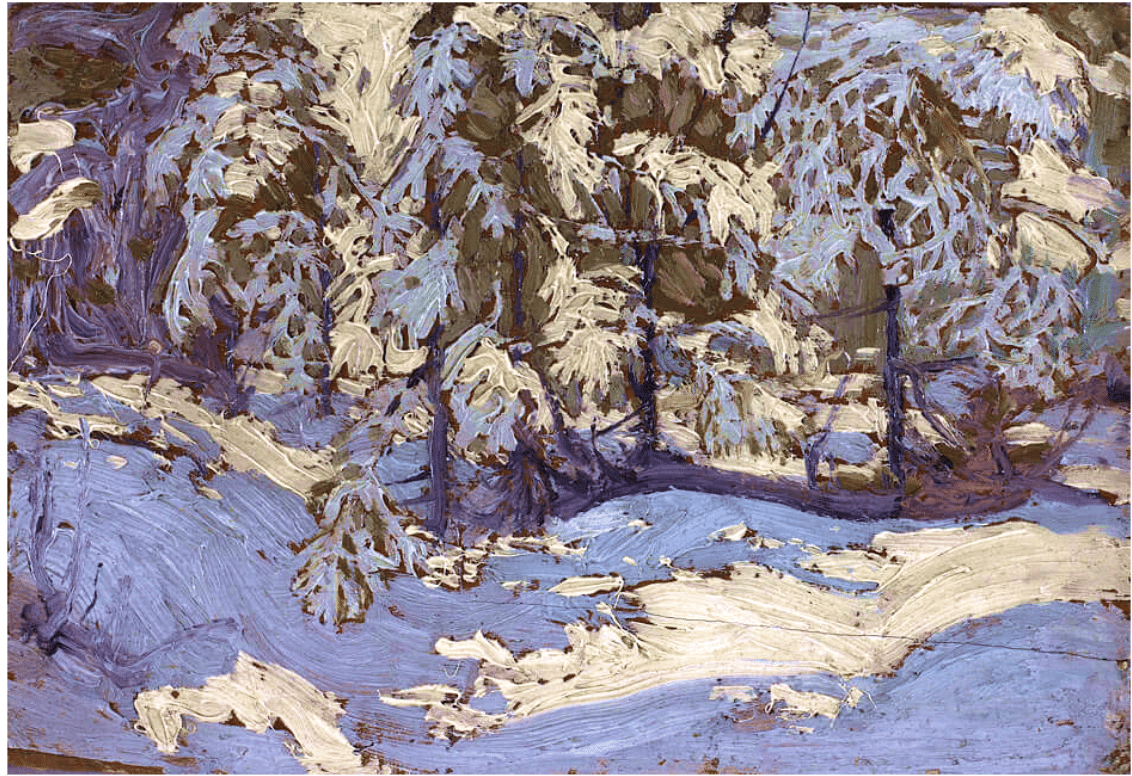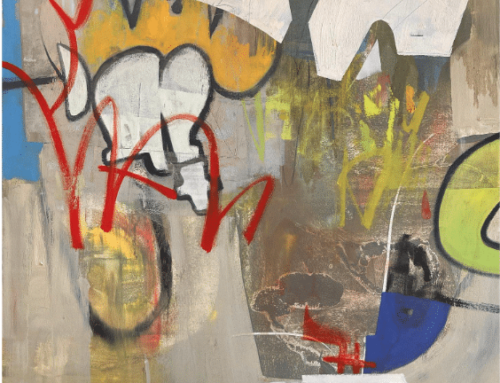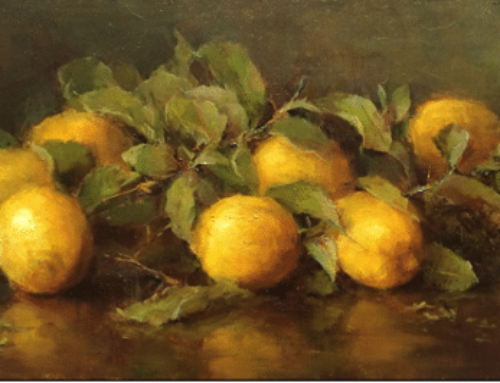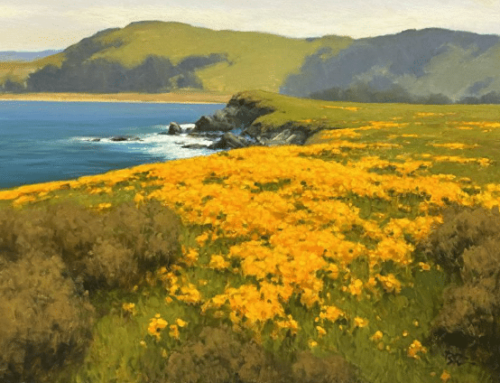A brilliant and prolific artist, Tom Thomson (1877–1917) painted lush, modernist celebrations of the Canadian wilderness en plein air. Thomson hiked and canoed to his locations, but his work doesn’t match up with what we think of as conventional plein air landscape painting today.
Thomson took a fearless, mostly untrained and original approach to observational landscape painting. His free and expressive way of interpreting nature in paint laid the foundation for a movement (led by friends, who called themselves the “Group of Seven”). It’s wild work, sitting somewhere between Impressionism, Modernism, and the Abstract Expressionism that came 30 years later.
Thomson died under what some consider mysterious circumstances. Though he was an expert water-and woodsman, his upturned canoe was found floating without him in it, and a week later his body was found with a four-inch bruise on his right temple.
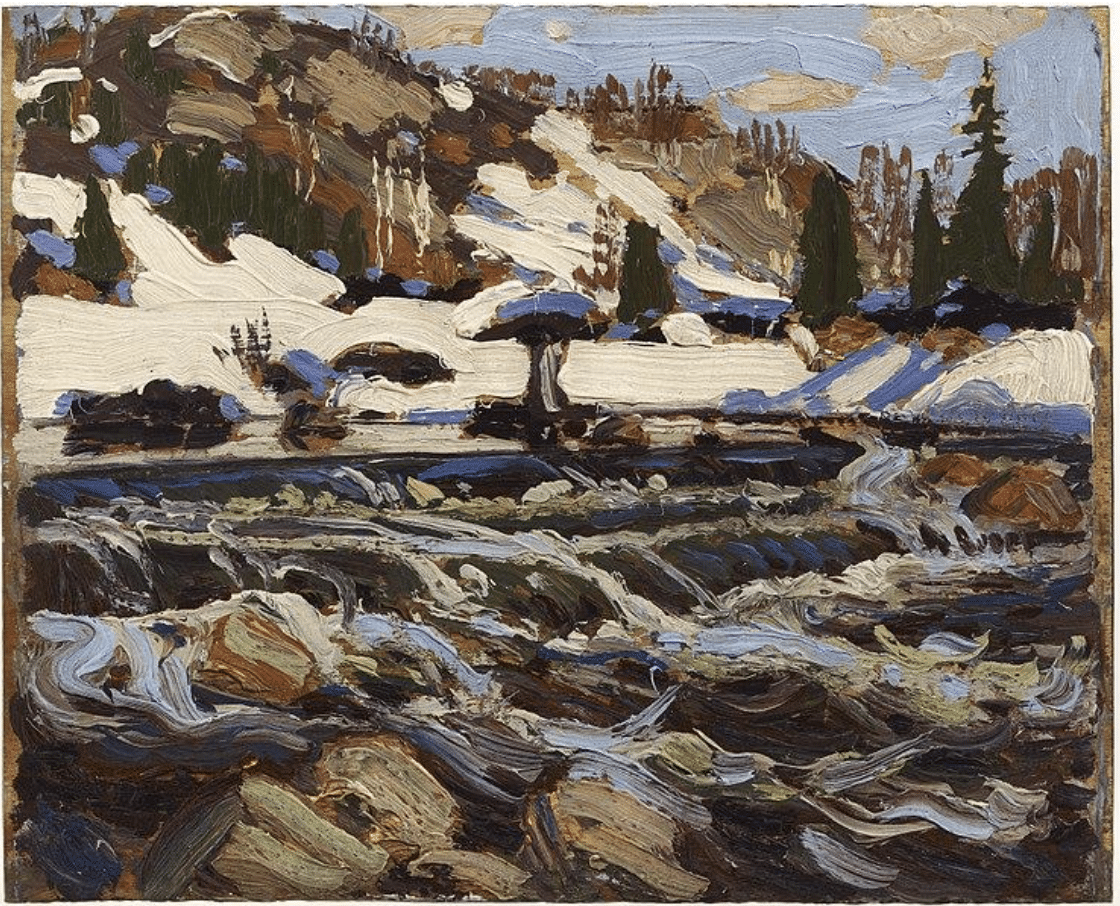
Tom Thomson, The Rapids, oil on panel, 8×10 inches. Painted a few months before the artist’s death.
Thomson has become an icon of Canadian culture. Visitors to Canada’s National Gallery in Ottawa will inevitably learn about him: “In 1909 Thomson, an engraver and graphic designer, found himself in the company of a group of talented and ambitious artists in Toronto. Haphazardly and frenetically absorbing the artistic zeitgeist, Thomson emerged as a gifted and innovative painter. The artist’s tragic death at Canoe Lake only five years into his promising career remains a national mystery,” says the museum’s curators.
Moved to record the first snow of the winter, Thomson executed First Snow in Autumn (1916) on the lid of cigar box, probably in late October or early November of that year. It’s rapturously described by the museum that owns it thus: “He did so in a way that turns these few square centimeters into a maelstrom of pigment that is at once tightly organized yet almost chaotically in motion.
“In First Snow in Autumn, by omitting any sense of finish or tidiness, Thomson achieves the freedom he had been working toward over the previous three years. Judging by his work during his final year, his all-consuming objective was to express emotion and passion. The issues of scale and artlessness—of making the act of painting look simple and casual—were also stirring in his work. Just a few weeks after he painted this little image, he began work on ten large canvases, a daunting ambition.”
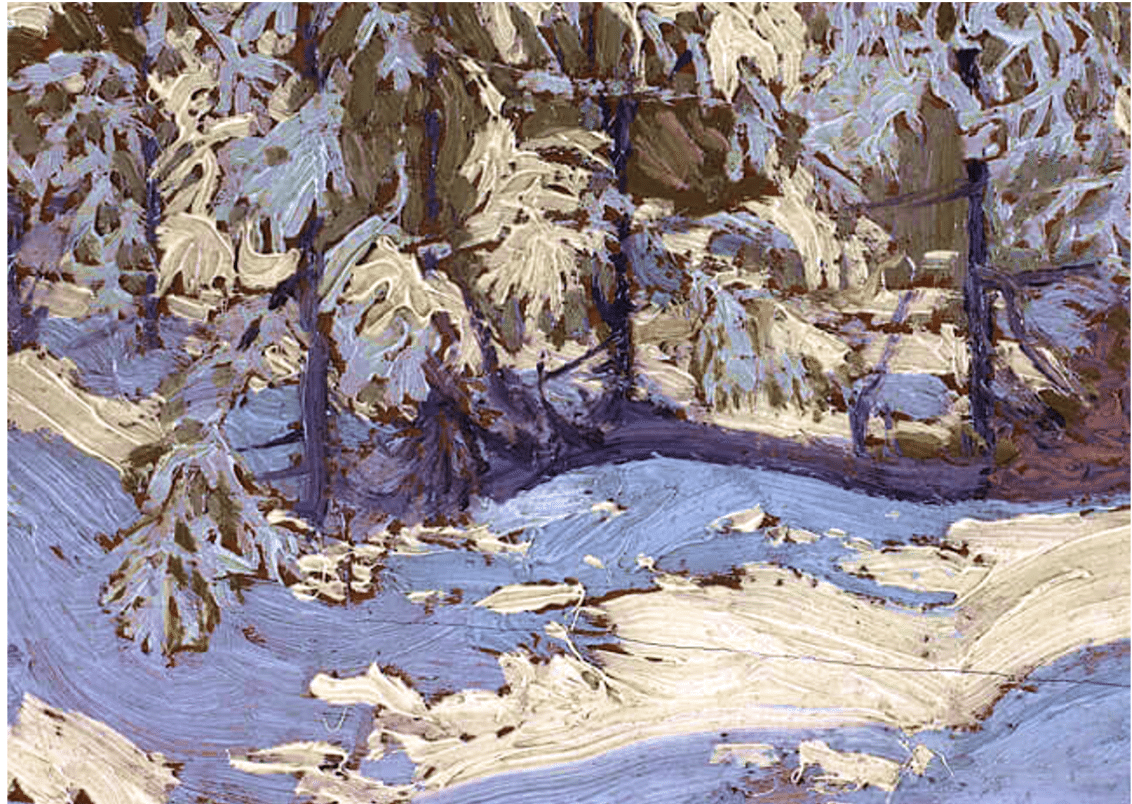
DETAIL, a closer look at the painting above by Tom Thomson, First Snow in Autumn, 1916, Oil on panel, 12.8 x 8.2 cm National Gallery of Canada, Ottawa
“In this tiny painting, with just three basic colors (white, a mixed blue-grey, and a strange blend of browns that is sometimes greenish and sometimes deep orangey-grey), Thomson creates a radiant gem that is animated throughout. The painting has depth too, the scene is distinct and specific, and his sense of accuracy underlies a painted surface of compulsive, obsessive improvisation.”
“Close inspection reveals how skillfully it is painted and how, at its core, it is almost an abstract work of art. In its thick application of paint and seemingly reckless brush strokes, the sketch is reminiscent of Pine Trees at Sunset, 1915. “
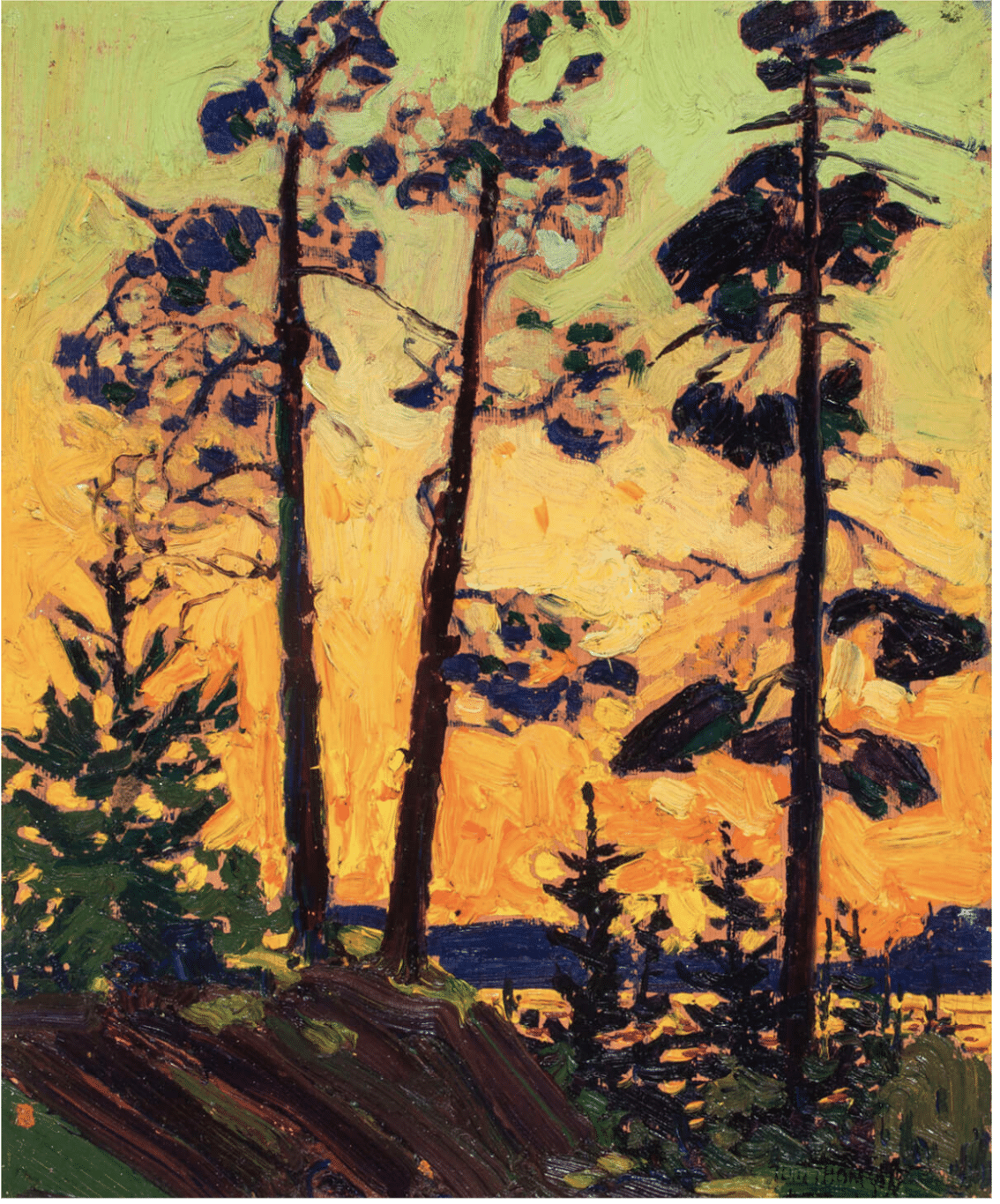
Tom Thomson, Pine Trees at Sunset, 1915, Oil on panel, 12.8 x 8.2 cm National Gallery of Canada, Ottawa
“The order within it, however, foreshadows the “action” paintings of Willem de Kooning (1904–1997), while the freedom with which the paint begins to flow reminds us of the much later and larger canvases of Jackson Pollock (1912–1956).”
“Painted at about the same time as First Snow in Autumn, the oil sketch Early Snow, Algonquin Park deals with the phenomenon of winter in quite different ways.
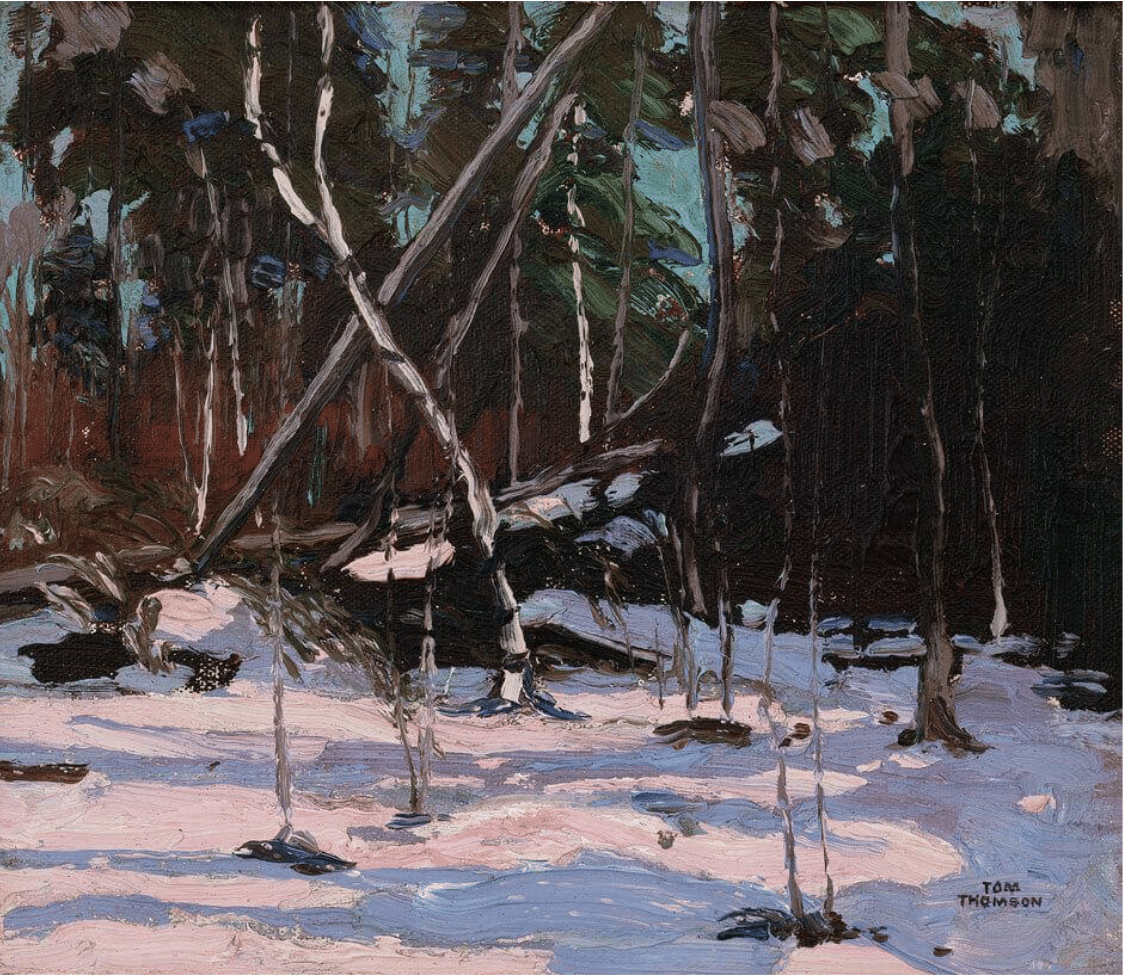
Tom Thomson, Early Snow, Algonquin Park, 1916, oil on canvas mounted on wood panel, 22.2 x 26.7 cm, private collection. Here, Thomson handled the challenge of combining a nocturne and a winter scene with a particular inventiveness in composition and an unorthodox color palette.
“It presents a forest scene (with a fallen tree providing a dramatic diagonal element) that is unusual and important because of the way it is painted. Pink light stretches across the snow in the foreground—a daring and unexpected colour made more prominent by the darker screen of trees that set it off. Grey-blue shadows join with the pink in forming a strong band across the foreground. To ensure that viewers accept these “unnatural” colours, Thomson used another odd colour—a flashy turquoise—for the sky.”
If you’re interested in learning more about Thomson and his work, have a browse through David P. Silcox’s Tom Thomson, Life and Work, an entire online art book here<<https://www.aci-iac.ca/art-books/tom-thomson/ free thanks to the Art Canada Institute.
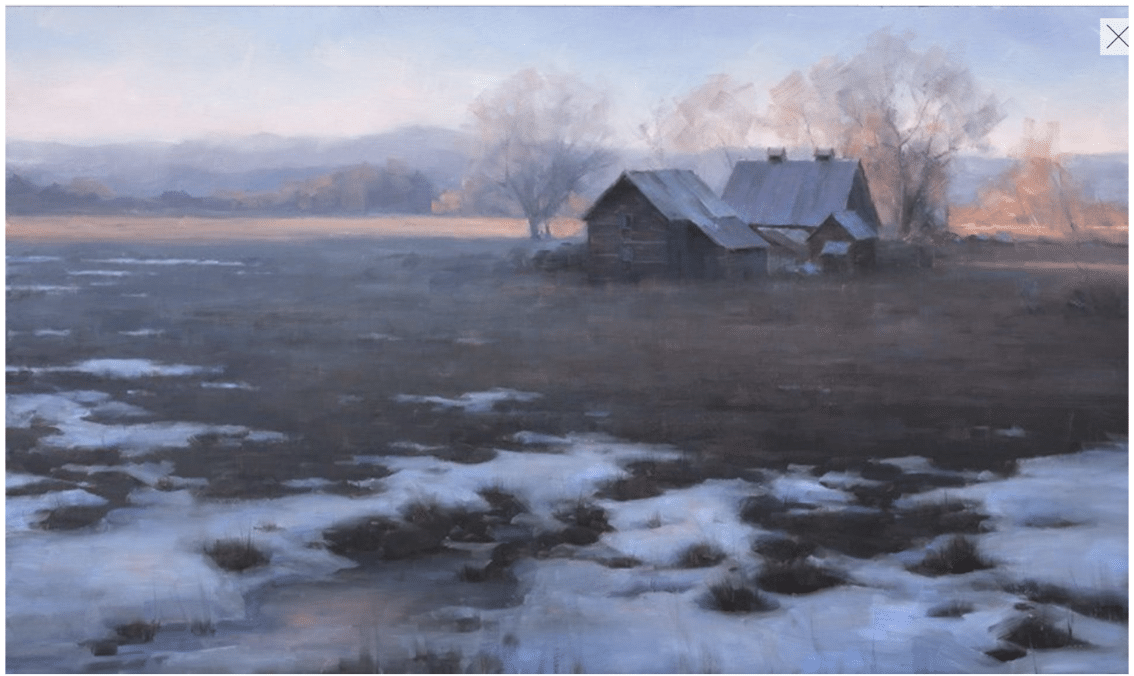
Dave Santellanes, Remnants. oil
Snow is a world of its own in oil painting. To learn how to render it, you might think about trying Dave Santellanes’s instructional video, Winter Landscapes, available here.

